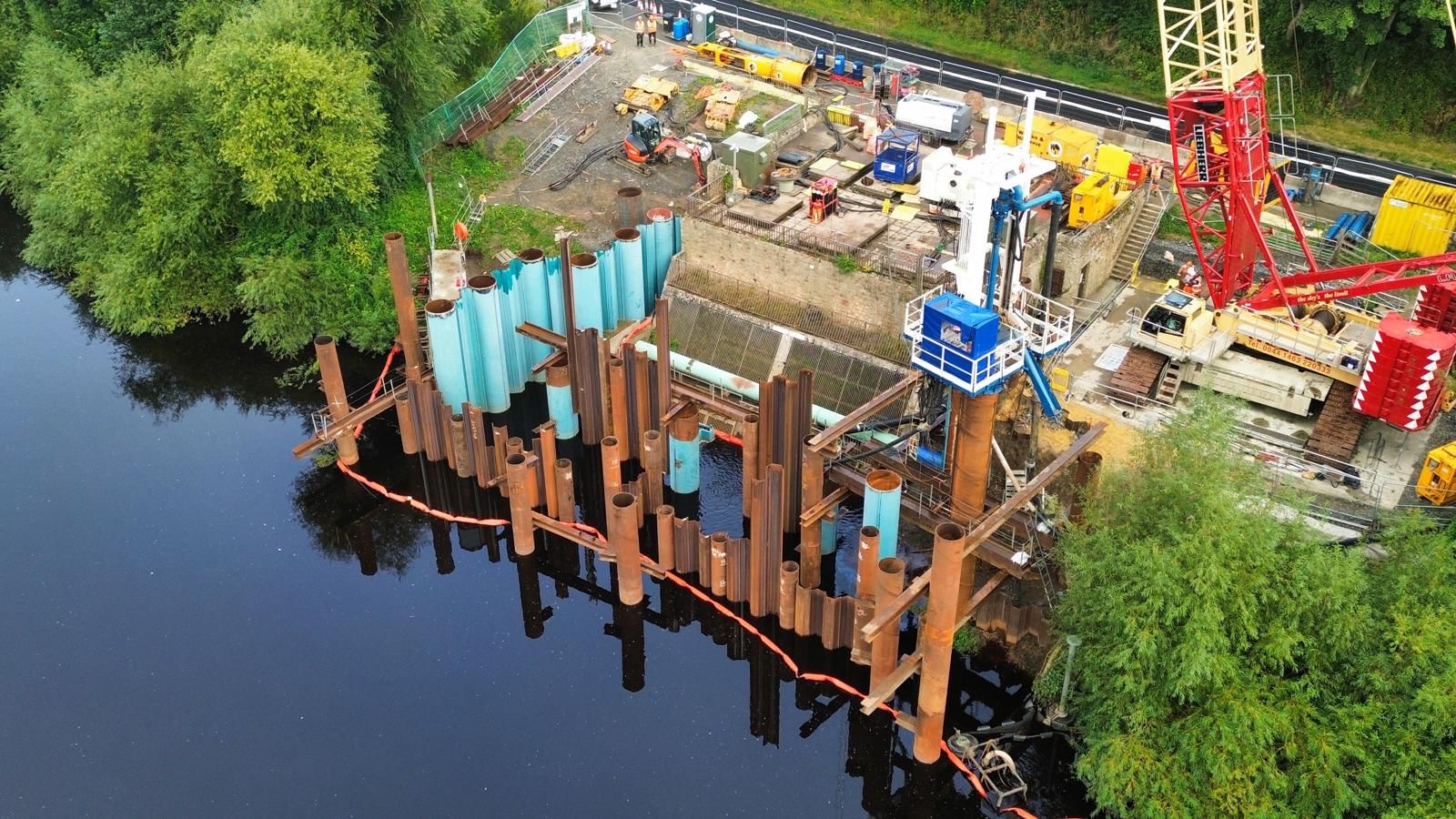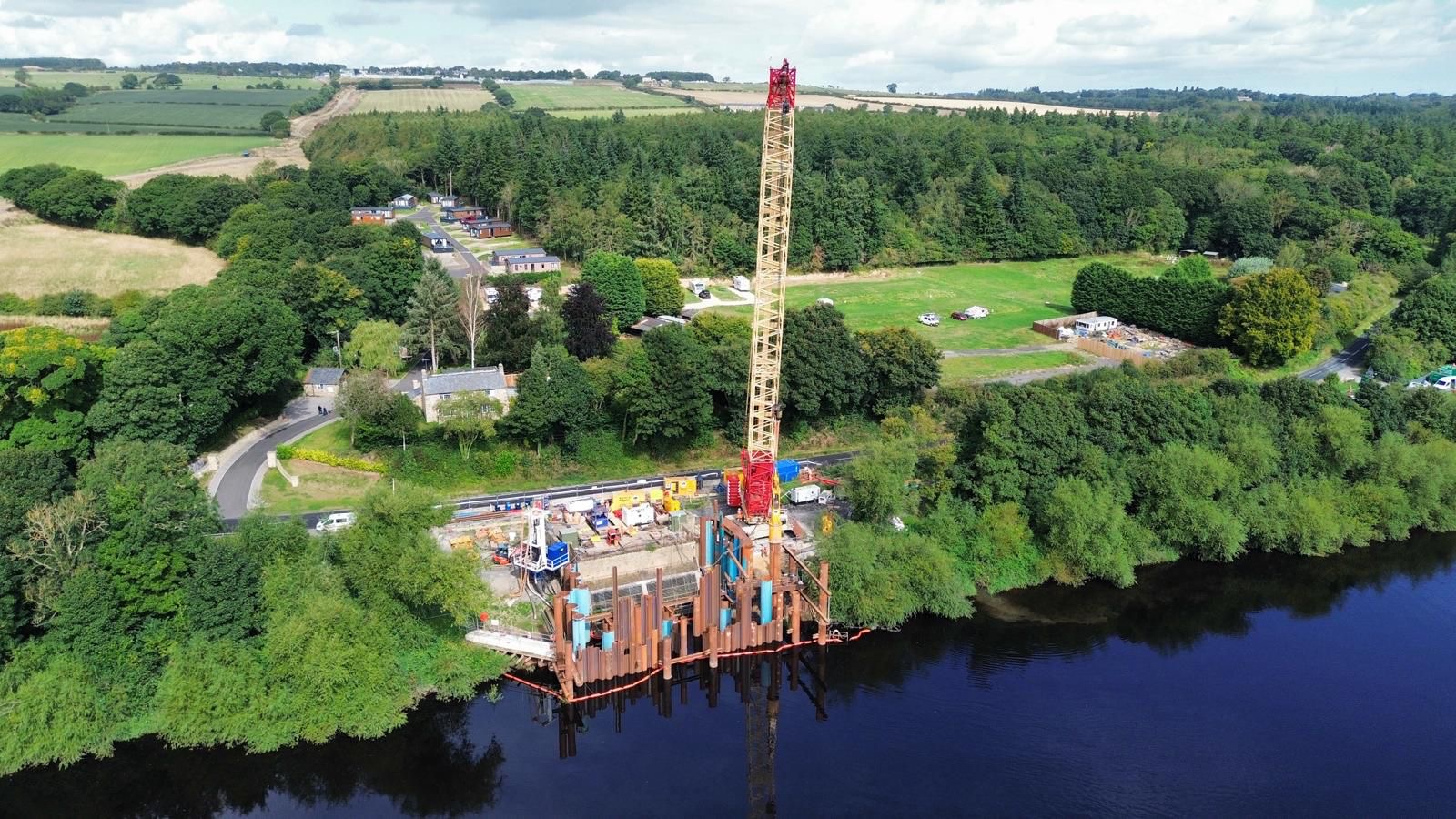Project details
Ovingham Intake Raw Water Pumping Station is located 750m east of Ovingham village in Northumberland. The pumping station provides raw water from the River Tyne to Horsley Treatment Works and Whittle Dene Reservoir. As part of a scheme to upgrade the pumping station, Southbay were awarded a contract to replace the existing Eel Screens. These piled structures are located within the river, and are used to protect the European Eel stock from pumping station infrastructure. This design and build contract involved the replacement of 4no. piled Eel Screens.

The initial preconstruction phase included working closely with our appointed design consultant Fairhurst to develop design proposals in accordance with our client’s budget. During this phase, we also developed temporary works designs, and ensured advanced procurement of materials.
An initial dive survey of the river bed was undertaken to confirm ground conditions and identify any obstructions. Traditional piling gates were then erected at the location of the first Eel Screen. Installed using a 400t crawler crane, tubular piles 1220mm in diameter, and in 660mm diameter were driven to refusal using an impact hammer. To allow fish to move away from working area, a soft start approach was adopted. Where required, pile top drilling was used to achieve the design depth. To complete the combi wall arrangement of the Eel Screen, PU18 sheet piles were installed.
To allow the construction of a RC sill at the base of the structure, penstocks were incorporated into the sheet pile arrangement, creating a cofferdam, which allowed the water to be pumped out, providing a dry working area. A 4t excavator was then lowered into the cofferdam to excavate the ground to the required depth. Once at formation level, concrete blinding and reinforcement was installed prior to the pouring of concrete to form the sill. Due to the confined working environment, a permit to enter system was employed when working within the cofferdam. Further works included the construction of a RC Capping Beam, which was formed by erecting temporary shuttering, allowing the placement of reinforcement and the required concrete pours.






